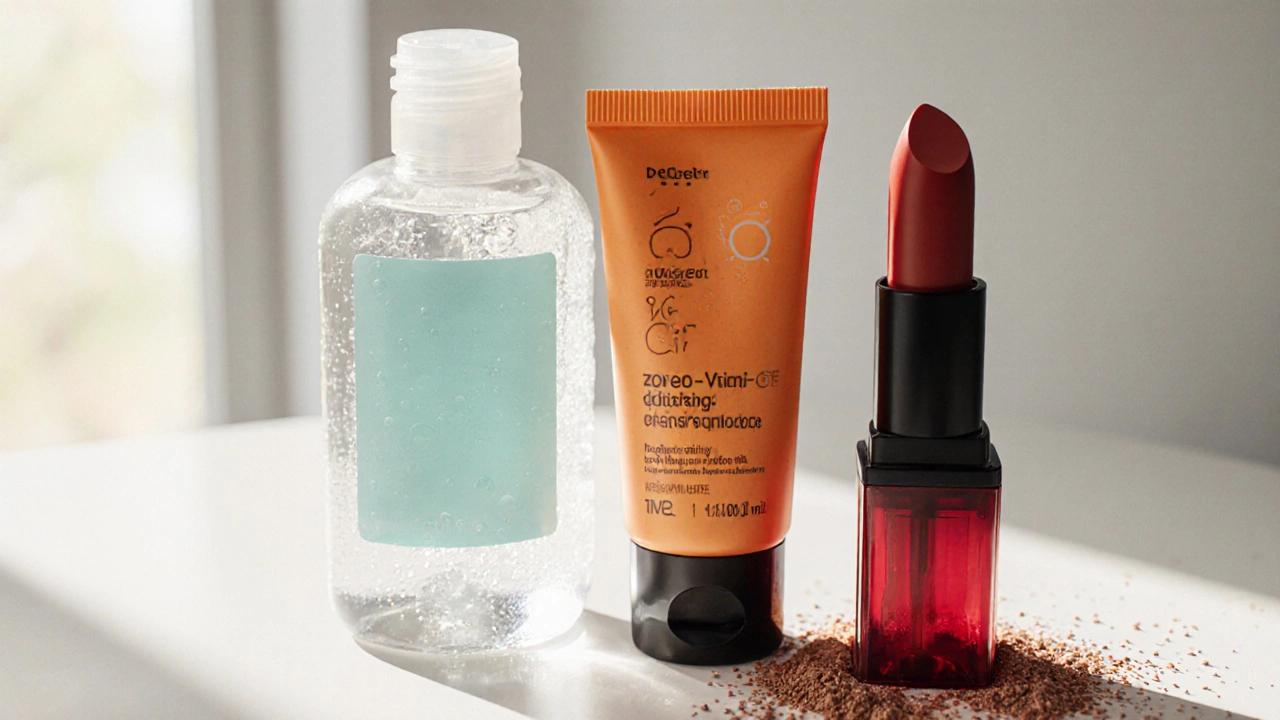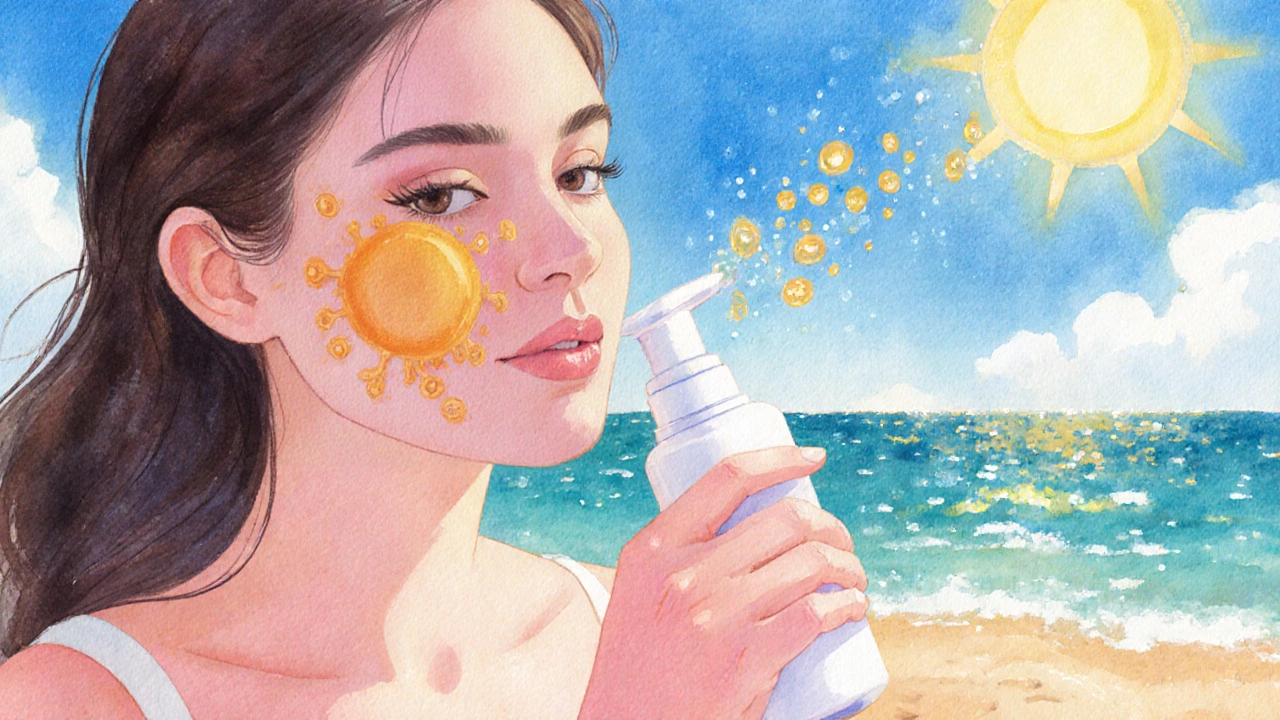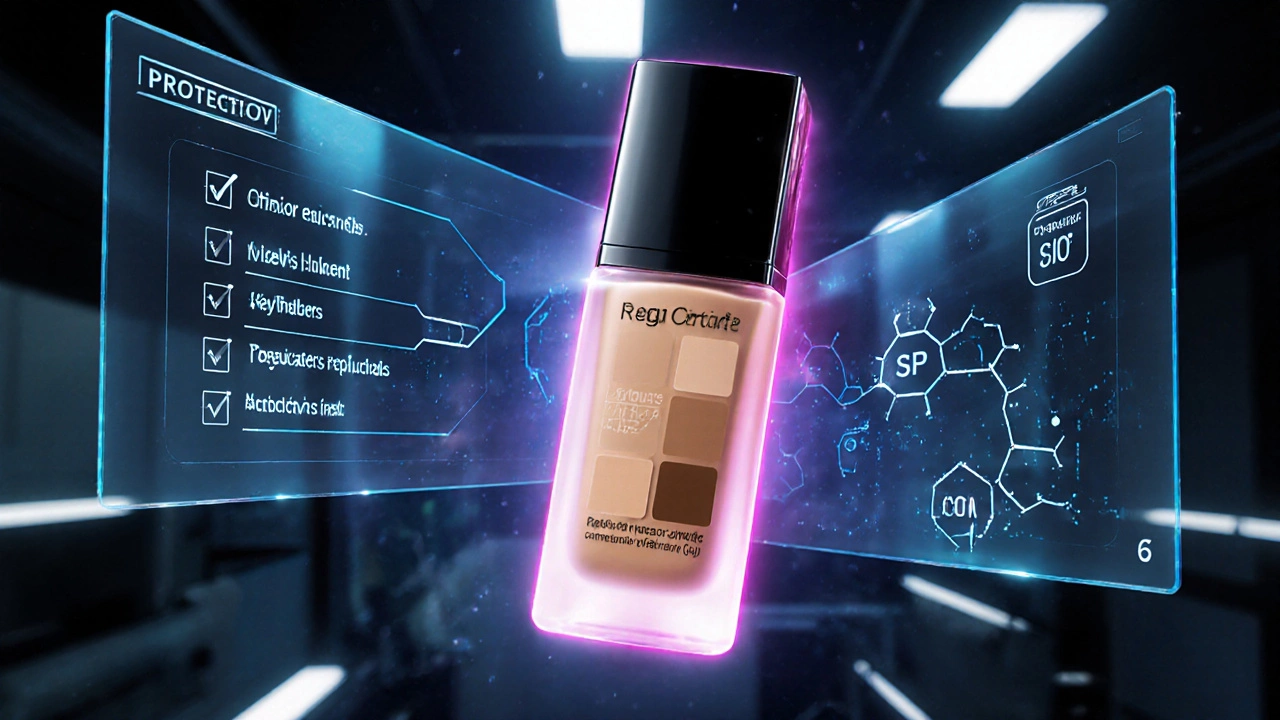
Cosmetic Classification Checker
Product Analysis Tool
Classification Result
When people talk about Cosmetics are products applied to the body to cleanse, protect, or alter appearance, the first question often is: how are they grouped? Knowing the three main classifications helps you pick the right product, understand labelling, and avoid surprises at the checkout.
Why Classifying Cosmetics Matters
Classification isn’t just academic jargon. It drives everything from ingredient limits to marketing claims. For instance, a cleanser labeled as a Cleansing cosmetic must meet safety standards that differ from a sunscreen, which falls under the Protective cosmetic umbrella. Knowing the class also tells you whether a product can make therapeutic promises or must stay strictly aesthetic.
1. Cleansing Cosmetics
Cleansing cosmetics are formulated to remove dirt, oil, makeup, and pollutants from the skin or hair. Typical examples include facial washes, body soaps, shampoos, and micellar waters. The primary goal is hygiene, not skin‑care benefits, although many modern formulas add moisturisers or soothing extracts.
- Key ingredients: surfactants (sodium laureth sulfate, coco‑betaine), botanical extracts, pH‑balancing agents.
- Regulatory focus: irritancy testing, microbiological safety, accurate labeling of surfactant concentrations.
- Typical claims: "Deep clean," "oil‑free," "for sensitive skin."
2. Protective Cosmetics
Protective cosmetics shield the skin or hair from external aggressors. Sunscreens, anti‑pollution moisturisers, and certain anti‑age serums belong here. While they still fall under the cosmetic umbrella, many jurisdictions require additional safety data because they claim to mitigate UV damage or environmental stress.
- Key ingredients: zinc oxide, titanium dioxide, antioxidants (vitaminC, green tea extract), barrier‑forming lipids.
- Regulatory focus: SPF testing (for sunscreens), permissible concentrations of UV filters, proof of non‑cumulative toxicity.
- Typical claims: "Broad‑spectrum SPF30," "protects against blue‑light," "reduces fine lines caused by pollution."
3. Decorative Cosmetics
Decorative cosmetics enhance or alter appearance without offering a functional benefit beyond aesthetics. Think foundation, lipstick, eye shadow, mascara, and glitter nail polish. These products are the most creatively driven segment, and they often push the limits of colour, texture, and finish.
- Key ingredients: pigments (iron oxides, titanium dioxide), emollients (jojoba oil, silicone blends), film‑formers.
- Regulatory focus: colour additive safety, microbiological stability, allergen disclosure.
- Typical claims: "Long‑lasting," "high‑coverage," "water‑resistant."

How Regulations Define the Three Classes
Both the Food and Drug Administration (FDA) in the United States and the European Union Cosmetics Regulation (EU Regulation No1223/2009) recognise these three groups, though they use slightly different terminology. In the U.S., the FDA calls them "cosmetics" but requires sunscreen ingredients to be listed under the drug monograph. In the EU, protective products with UV filters are labelled as "cosmetics with a protective function" and must pass a separate safety assessment.
Understanding which regulatory pathway applies can save you headaches when you travel abroad or shop online. A product marketed as a "daily SPF moisturizer" in Australia will have a different ingredient ceiling than a plain moisturiser sold in Canada.
Table: Quick Comparison of the Three Classifications
| Aspect | Cleansing | Protective | Decorative |
|---|---|---|---|
| Primary purpose | Remove impurities | Shield from UV or pollution | Enhance appearance |
| Typical examples | Facial wash, shampoo | Sunscreen, antioxidant serum | Foundation, lipstick |
| Key regulatory focus | Irritation & microbiology | SPF testing, filter limits | Colour additive safety |
| Common claims | Deep clean, oil‑free | Broad‑spectrum, anti‑pollution | Long‑lasting, high‑coverage |
Practical Tips for Choosing the Right Product
Now that you know the three buckets, here’s a quick cheat‑sheet to help you decide what to buy:
- Identify your need. If you’re looking to get rid of makeup or dirt, aim for a cleansing product.
- Check the label. Look for SPF numbers, “anti‑pollution,” or “UV‑filter” wording to confirm a protective category.
- Read the ingredient list. Pigments and mica signal a decorative product, while zinc oxide points to protection.
- Mind the regulations. If you travel, verify that the product complies with the destination’s rules (e.g., EU limits on titanium dioxide).
- Test for skin compatibility. Even decorative items can cause reactions; patch‑test new colours or textures.

Common Misconceptions
Many shoppers assume that “all cosmetics are the same,” but the classification system proves otherwise. A cleanser that claims to “brighten skin” often includes low‑dose brightening agents, inching it toward the protective side. Conversely, a sunscreen marketed as a “tinted moisturiser” lives in a gray area-it’s both protective and decorative, so it must meet the stricter safety checks of the protective class while also adhering to colour‑additive rules.
Another myth is that “natural” automatically means “safe.” Natural extracts appear in every class, but the safety evaluation still depends on concentration and intended use. A natural oil in a decorative lip product can be a sensitiser, whereas the same oil in a cleansing shampoo might be harmless.
Future Trends in Cosmetic Classification
The industry is already blurring the lines. “Cosmeceuticals” market themselves as both decorative and therapeutic, prompting regulators to draft new guidance. Expect more hybrid categories that require dual testing-think anti‑age foundations that claim SPF and collagen‑boosting effects. Keeping an eye on regulatory updates from the Food and Drug Administration and the European Union Cosmetics Regulation will help you stay ahead of product launches.
Frequently Asked Questions
What is the difference between a cleanser and a makeup remover?
Both are cleansing cosmetics, but a cleanser is formulated for daily use on skin, while makeup remover often contains stronger solvents to dissolve pigments. The latter may be harsher on sensitive skin, so choose based on your routine.
Can a decorative lipstick contain SPF?
Yes. When a lipstick adds sun protection, it crosses into the protective cosmetic category, which means it must meet SPF testing standards and label the exact SPF value.
Do all sunscreen ingredients count as "protective cosmetics"?
In the EU and many other regions, UV filters are treated as protective agents, so any product with zinc oxide, titanium dioxide, or organic filters falls under the protective class and requires a full safety dossier.
Are there any colour additives I should avoid in decorative makeup?
Regulators maintain a list of approved colour pigments. Look for the EU or FDA certification symbols on packaging. Avoid products that list "non‑regulated" pigments, especially in eye or lip categories.
How do I know if a product is compliant when I shop online?
Check the ingredient list for recognized UV filters, look for the appropriate regulatory badge (FDA, CE, etc.), and read the product’s safety data sheet if it’s a professional brand. Trusted retailers often include a compliance note on the product page.
 Hair Care
Hair Care